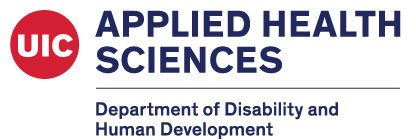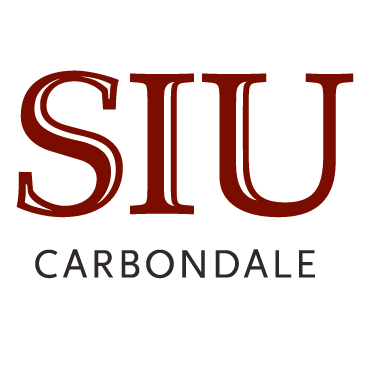By Melissa Singleton
Thanksgiving can be exhausting. Don’t get me wrong, I love pie and mashed potatoes and spending time with my family as much as the next person. But when the food coma hits, it hits hard. Last week, as I started to sink into a full-bellied slumber-state, my sister’s voice rang out from the other room where she sat on the couch: “Wake up Heather, wake up!”
For context, my sister’s name is Heather. She is 29 years old, also loves mashed potatoes and pie and family, and at this point in the afternoon, was just as sleepy as me. She also has a developmental disability. Her condition is rare enough that it doesn’t have a name, but what you need to know to understand this story is that it affects her ability to express herself through speech. Part of her disability is apraxia. This means that she has trouble initiating and carrying out movements, even if her muscles can technically perform the task. Often, she is able to say 2-3 consecutive words at most. Sometimes, the wrong word comes out, or a single word is repeated multiple times instead of saying new words. The words can be hard to understand if you don’t know her well, particularly without the context of other words around them. But the phrase she just produced was five words long, completely intentional, and clear as day. Why? Because she didn’t just say it, she sang it.
Our school mascot growing up was the bulldogs. One of the chants we heard frequently through our years in the school district was “Let’s go Bulldogs, let’s go!” followed by a rapid series of three claps. This same pattern – the rhythm and intonation – was what my sister used when she said, “Wake up Heather, wake up!” It was a coherent and comedic way to get the point across that she was tired at that moment, just like me. Instinctively after she chanted the words, I clapped three times in rapid succession, just like I was at a highschool basketball game. A “me too” to her “I’m tired.”
A musical representation of the rhythm and melody of Heather’s chant with the lyrics from the high school chant on top and her own lyrics on the bottom.
Image description: Hand-drawn musical staff on bullet journal paper with a bass clef in 4/4 time signature and two measures of notes. The first measure is all quarter notes: B, B, G-sharp, F-sharp, with the G-sharp slurred into F-sharp. The second measure is two quarter notes followed by three eighth notes and and an eighth rest: B, B, X, X, X, rest. The X’s represent claps. The phrase “Let’s go Bull-dogs Let’s go *clap clap clap*” is written along the top and “Wake up Heather Wake up *clap clap clap* is written along the bottom, with each syllable corresponding to a note.
The summer before I started medical school, I used my carefully collected savings to fly to the far western side of France. From there, I embarked, along with dozens of other pilgrims, on the Way of St. James – a traditional pilgrimage across the Pyrenees mountains and to the eastern side of Spain. Each night, I stopped in albergues, which are cheap hostels that provide a place to rest and an inexpensive meal for weary pilgrims. People from all across the world walked, stopped, and rested alongside me. While the days were dedicated to silence and reflection, the evenings were for sharing food, wine, and laughter. We didn’t all speak the same language, so many conversations were made up of gestures and single words. But the nights where we truly conversed were the nights we had music. One pilgrim walked with her guitar strapped to her back. In the evenings she played the Beatles, Billy Joel, Irish folk songs, Czech pop songs. We all swayed along and sang along when we could.
Music is a universal language. This is something we all know. But in the medical world, we often view the interventions we use, whether they’re medication or therapy, only as treatments for improving deficits. This includes music therapy. When I search a scholarly database for trials on music therapy and communication, the highest quality literature – metaanalyses of randomized controlled trials – are like this one: Music in the treatment of neurological language and speech disorders: A systematic review. They are focused on recovery or improvement of spoken words. But they fail to recognize that music is not just a method for recovering or improving our ability to communicate through speech. It is also, in itself, a form of communication.
My sister Heather did music therapy when she was little. At the time, it was an attempt to help her speak. While it may have helped with the words she is able to say now, music gave her something even better – a new method of communicating. Music is processed differently in our brain than speech. For whatever reason, my sister’s brain has an easier time with music than with the spoken word. She struggles to form a complete sentence, but sings an entire chorus with ease. Creating new sentences to describe a situation is a challenge, but adding new words to an old tune is something she excels at more than most people.
So here is my point. My call to action. Why I’ve been rambling for the past six paragraphs. I call you, whoever you are, to think of music as not only a medical treatment or artistic expression, but as a form of communication. If you have a child with a disability, encourage them to listen to and create music, and when they do, take note of what they are telling you. If you are a doctor considering a referral to music therapy, don’t only refer patients who might be able to gain the spoken word, but also those who would benefit from having a new way to communicate. And if you’re someone in my life, and you hear my sister sing you a little song, pay attention. She might just be jamming out to Party in the USA, but maybe – just maybe – she’s telling you something. Listen closely.








